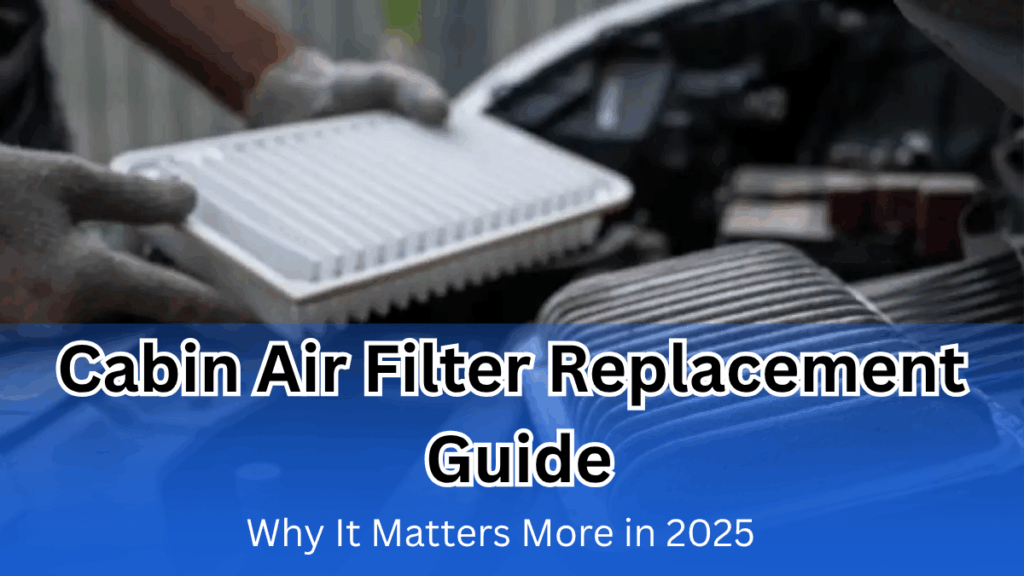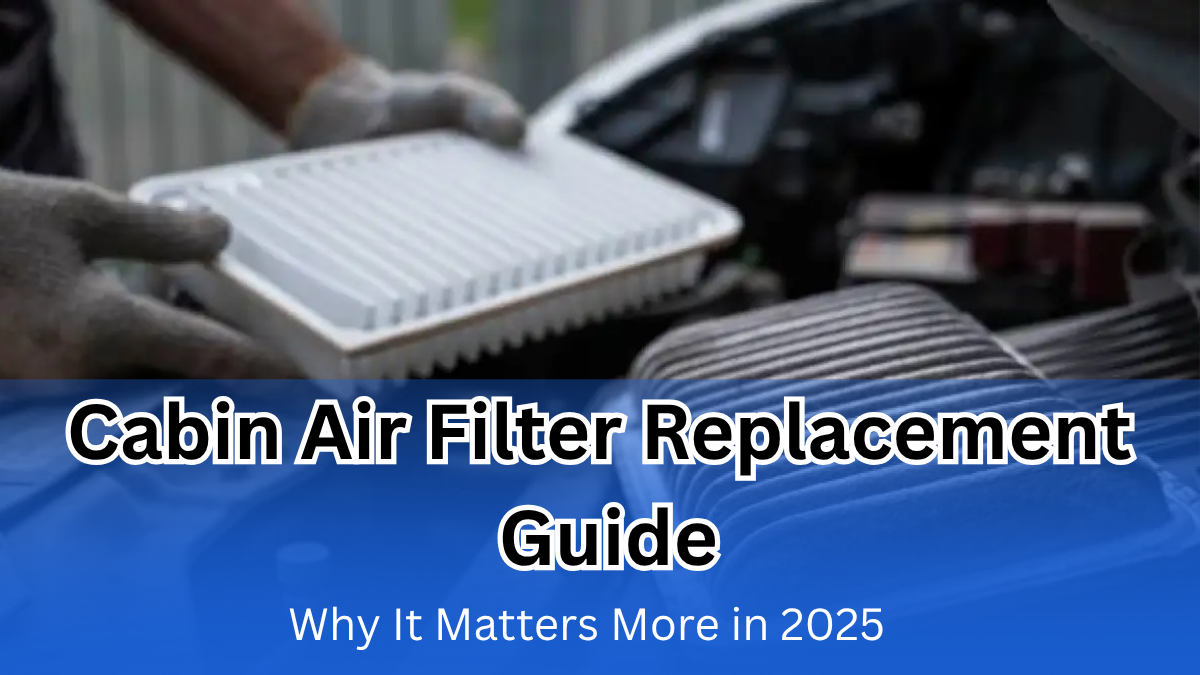As we step into 2025, car owners are becoming more conscious about air quality—not just outside, but inside their vehicles. That’s why something as overlooked as your cabin air filter deserves real attention. Whether you’re trying to improve interior air quality, prevent allergies, or boost your HVAC performance, this tiny component plays a big role.

Table of Contents
What Is a Cabin Air Filter?

A cabin air filter is part of your vehicle’s heating, ventilation, and air conditioning (HVAC) system. It helps purify the air that comes through the vents into your car’s cabin.
Key Functions
-
Traps dust, pollen, and airborne contaminants
-
Improves interior air quality for passengers
-
Supports allergy protection by filtering mold, bacteria, and other irritants
-
Protects your HVAC system from clogging
Why Replacing Cabin Air Filters Matters More in 2025
With higher pollution levels, longer drive times, and an increased focus on in-car wellness, replacing cabin air filters regularly has never been more important.
Reasons It’s More Crucial Now
| Reason | 2025 Impact |
|---|---|
| Air pollution rising | More contaminants entering your vehicle |
| Longer commutes | Increased exposure to exhaust and allergens |
| Climate shifts | Extended allergy seasons and more airborne particles |
| Popularity of EVs | Clean filters are vital to maintaining EV HVAC systems |
When Should You Replace a Cabin Air Filter?
Most carmakers recommend you replace cabin air filter every 12,000 to 15,000 miles, but this can vary based on where and how you drive.
Consider replacing sooner if:
-
You often drive in polluted or dusty environments
-
You notice reduced airflow from your vents
-
You or your passengers suffer from seasonal allergies
-
There’s a persistent musty or dirty smell in the car
Warning Signs Your Cabin Air Filter Is Failing
Ignoring a clogged filter can affect both your health and your car’s performance. Watch out for these red flags:
-
Musty or unpleasant smell when turning on AC or heat
-
Reduced airflow from vents even at full power
-
Foggy windows due to poor ventilation
-
Increased allergy or respiratory symptoms while driving
How to Replace a Cabin Air Filter
This is one of the easiest DIY car maintenance tasks.
Steps to Follow
-
Locate your cabin air filter (usually behind the glove box)
-
Remove the access panel and old filter
-
Insert the new filter in the correct orientation
-
Reassemble and test the airflow
Tip: Choose high-quality car filters with HEPA filtration for maximum allergy protection and improved interior air quality.
2025 Cabin Air Filter Replacement Costs
| Vehicle Type | Estimated Cost (INR) |
|---|---|
| Hatchbacks/Small cars | ₹500 – ₹1,200 |
| Sedans and SUVs | ₹800 – ₹1,800 |
| Premium vehicles | ₹1,500 – ₹3,000 |
| EVs with HEPA filters | ₹2,000 – ₹4,000 |
FAQs
Q1. Can a cabin air filter be cleaned and reused?
While some filters can be lightly cleaned with air, most are single-use and should be replaced to ensure effective interior air quality and allergy protection.
Q2. What happens if I delay cabin air filter replacement?
Delaying can cause decreased airflow, unpleasant odors, and increased pollutants inside your vehicle—compromising comfort and health.
Q3. Are electric vehicle cabin filters different?
Yes, many EVs come with HEPA-grade car filters. These filters need timely replacement to maintain HVAC performance and allergy protection.
Q4. How do I know which filter is right for my car?
Check your car manual or consult a trusted mechanic. Always ensure the replacement meets or exceeds OEM specs when you replace cabin air filter.
Final Thoughts
In 2025, clean cabin air is more of a priority than ever. From reducing allergy flare-ups to maintaining efficient air circulation, a timely cabin air filter replacement helps you drive comfortably and breathe easy. Whether you’re in a traditional car or a sleek EV, don’t let a small filter turn into a big problem.
Click here to learn more







